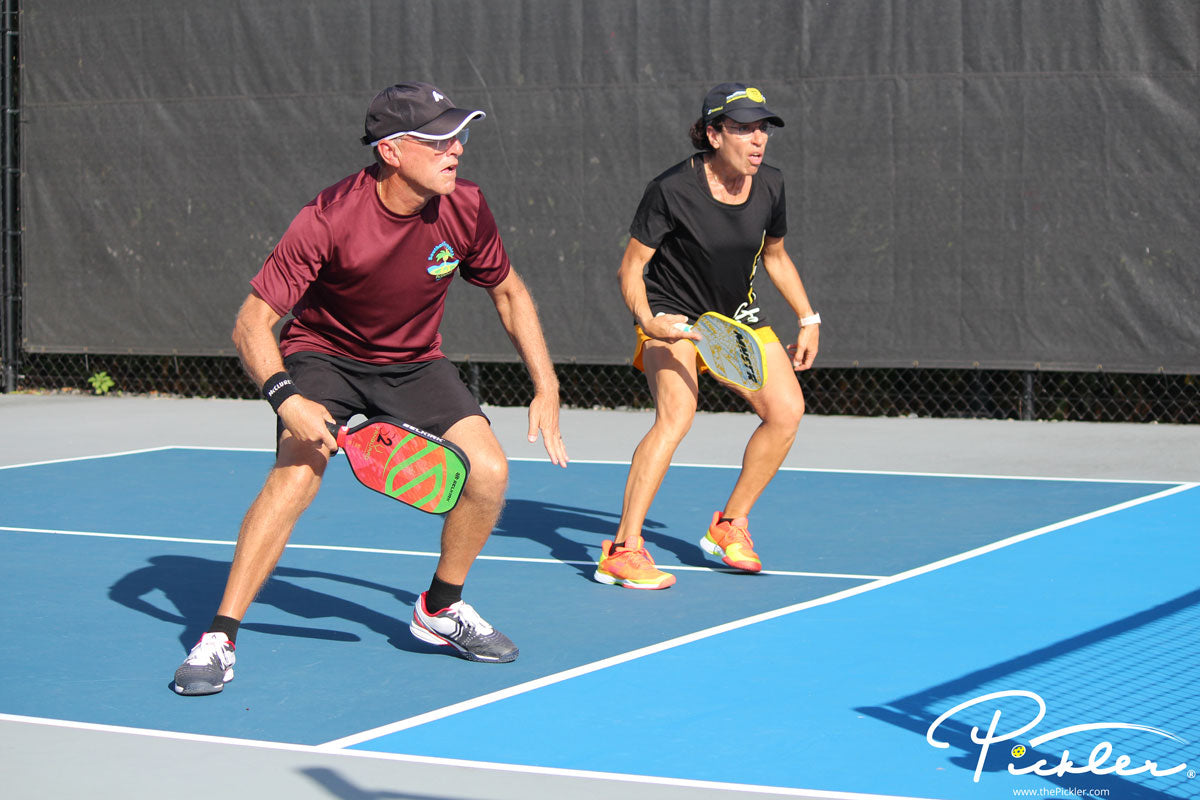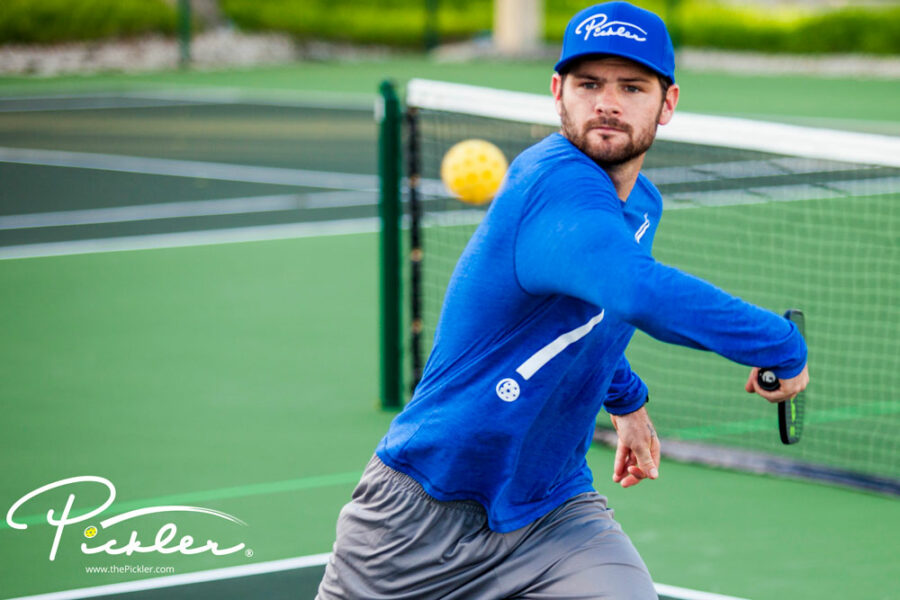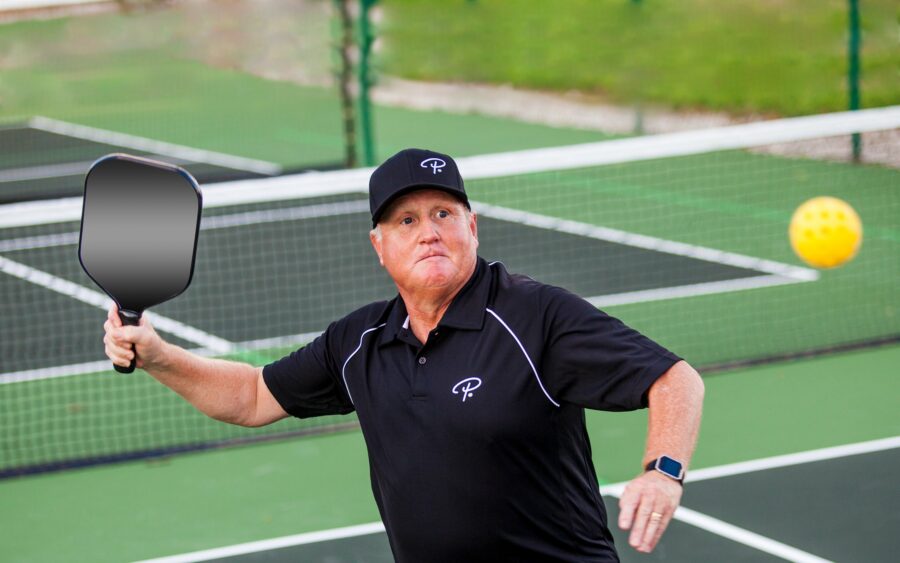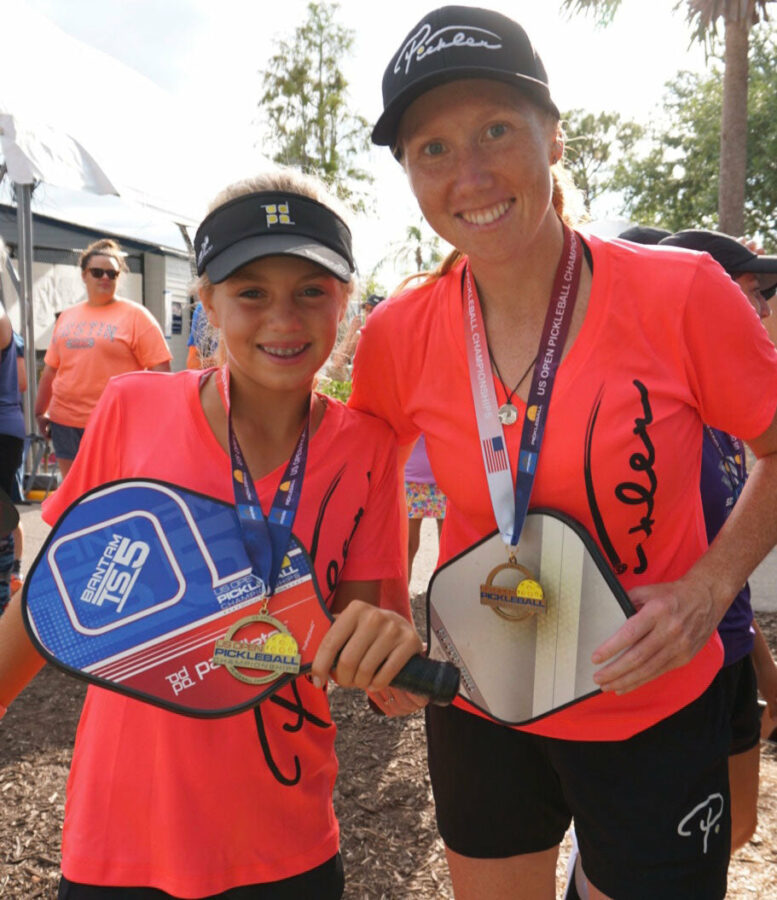Imagine you are on the pickleball court. You and your partner work to get the Kitchen line, while keeping your opponents back near the baseline. You and your partner have full control of the Kitchen line. Your opponents continue to scramble at the baseline and are staying back. What should you do?
You have two options:
- Continue to keep your opponents back by the baseline; or
- Try a short, soft shot (like a drop volley) to take advantage of the open court space near the Kitchen (since your opponents are deep in the pickleball court).
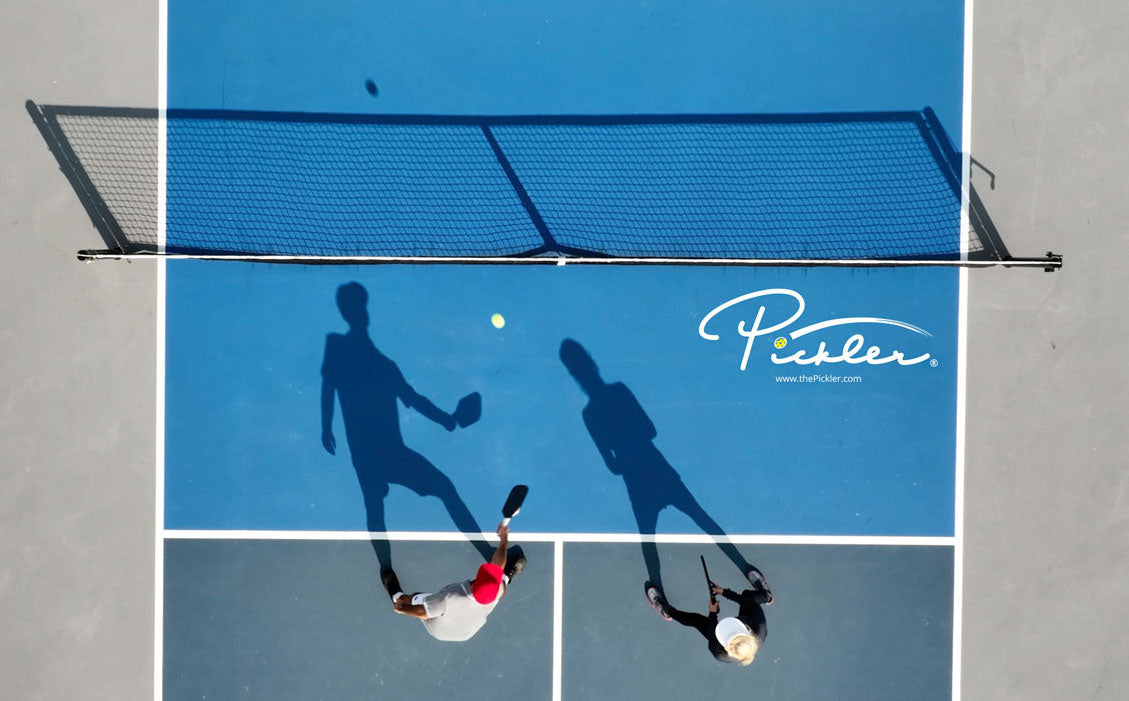
You should predominantly use option #1. You should continue to keep your opponents back by the baseline. This is because you have the advantage in this scenario. You have control of the pickleball court and, if you can keep your shots deep in the court, you are forcing your opponents to make harder and harder shots.
Too often, we see pickleball players try to hit a drop volley or soft shot, only for their opponents to be able to race in to reset the pickleball and regain the Kitchen line. In other words, the pickleball players that controlled the Kitchen line give up their advantage and invite their opponents back in from the baseline. We also oftentimes see pickleball players hit a drop volley or soft shot in order to “do something different,” but the shot goes straight into the net, resulting in the loss of the rally.
If you are these pickleball players, instead of giving up your court position advantage, continue to keep your opponents back. Keep them deep in the pickleball court, and consider hitting angles to move your opponents around at the baseline.
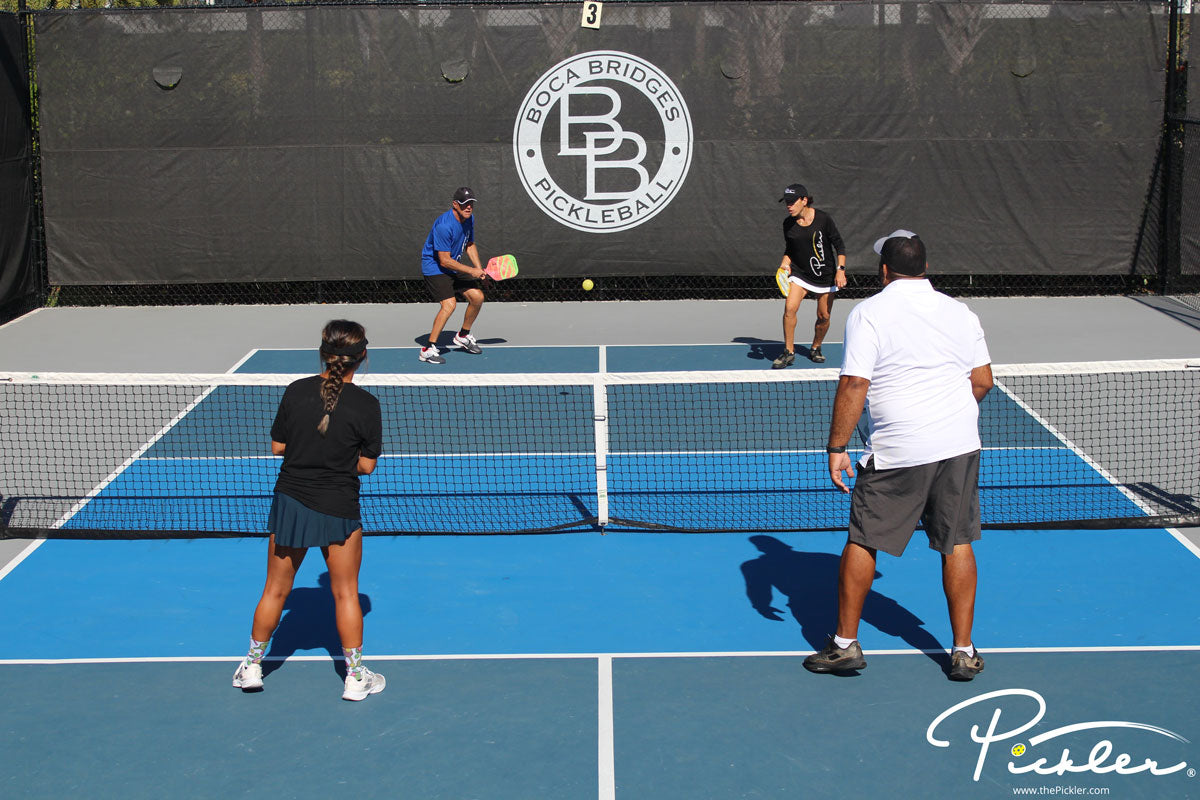
With that said, there are two situations where a short, soft shot (like a drop volley) can be used to your advantage:
- When you win the large majority of dink battles at the Kitchen line against your opponents, then you may want to use a short, soft shot to invite your opponents into the pickleball net and engage them in a dink battle; or
- When (a) your opponents have poor mobility; and (b) your drop volley has a high success rate (in other words, you practice and drill this shot, so it is a high percentage shot), then you could try a short, soft shot for a winner in the short court. However, as alluded to above, many times, pickleball players have a tendency to under-hit a drop volley, as they are trying to keep the shot close to the pickleball net. So, be sure to have control over this shot before putting your court positioning at risk.
In summary, if you and your partner have the advantage of court positioning—you and your partner control the Kitchen line and are keeping your opponents back by the baseline—then keep your advantage by continuing to keep your opponents back on the pickleball court. Only consider the short, soft shot or drop volley in specific circumstances. You will generally win more points on the pickleball court by keeping your opponents back.

